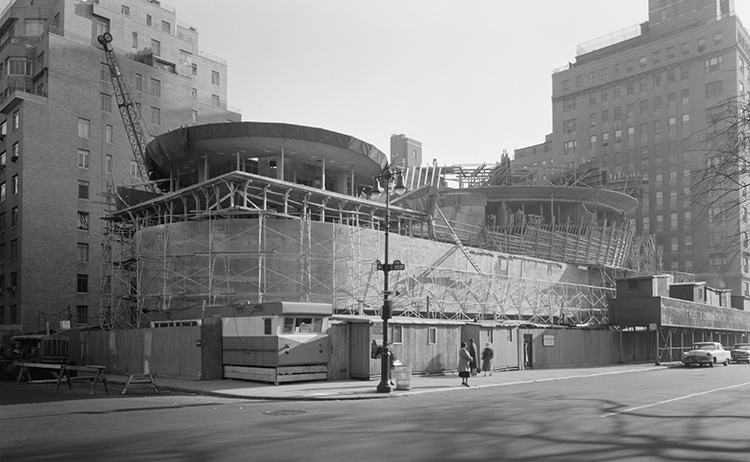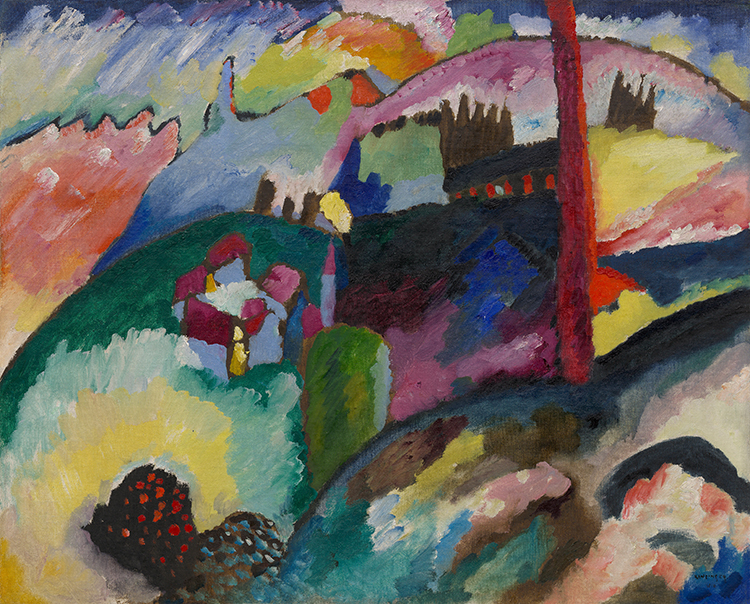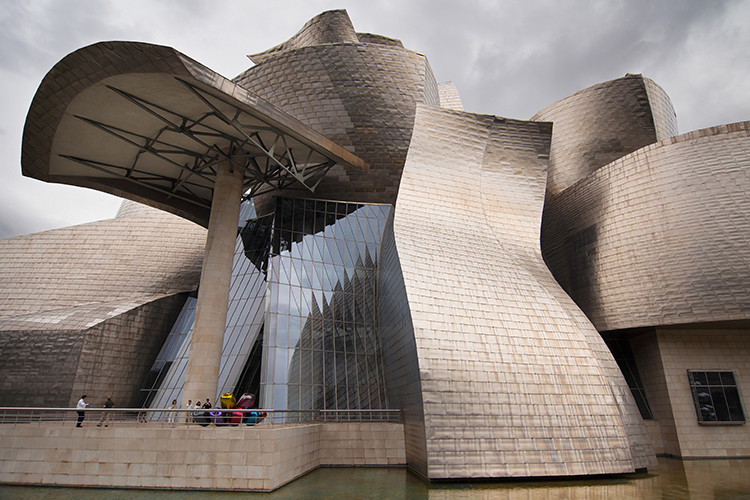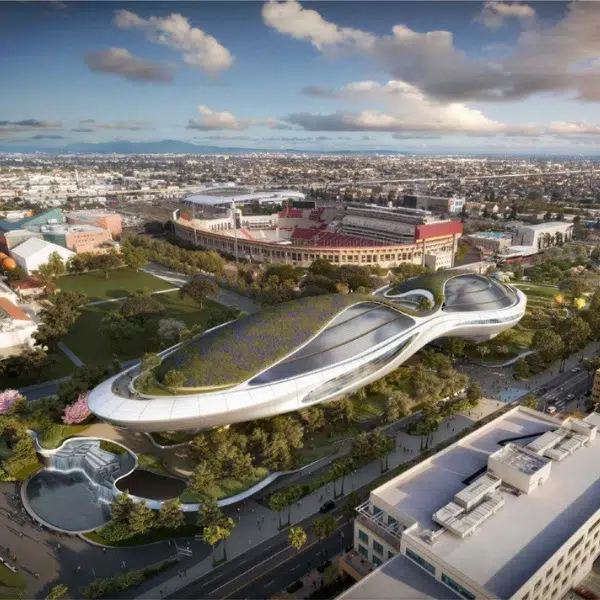
Photo: Stock Photos from TRAVELVIEW/Shutterstock
The Solomon R. Guggenheim Museum is a must-see for art lovers who happen to find themselves in New York City. An abstract, modern building on Fifth Avenue north of the Metropolitan Museum, the institution contains works from legendary artists of the past century. Color field abstraction paintings by Helen Frankenthaler, early landscapes by Piet Mondrian, and dramatic colors from Wassily Kandinsky are just some of the stunning works to be found within the spiral-shaped galleries of the museum. The building itself—designed by Frank Lloyd Wright—was the fantastic product of over 700 sketches, six working drafts, and 13 years from commission to ribbon-cutting.
Together, the Guggenheim is more than the sum of its parts. So famous as to be the subject of art itself, the building is a fixture of the Museum Mile in New York City. Recent acquisitions from contemporary artists such as Sara Cwynar and Jamian Juliano-Villani—as well as fascinating exhibits such as Sculpture After Abstract Expressionism—demonstrate the continued evolution of one of New York's most storied institutions.
Read on to learn about the Guggenheim Museum, one of the world's most famous art institutions.
Who Were the Guggenheims?

Solomon R. Guggenheim and daughter Barbara Josephine Guggenheim Obre, sometime between 1915 and 1920. (Photo: George Grantham Bain Collection/Library of Congress)
In 1847, a Swiss immigrant named Meyer Guggenheim arrived in the United States to make his fortune. He married a fellow Swiss immigrant and became involved in mining businesses. As the business grew and expanded into smelting, the couple had ten surviving children over the next 25 years. As family-sized increased so did the fortune of the Guggenheims, until they were some of the most prominent citizens of Gilded Age America.
The Guggenheim children continued their family's business interests while leading fascinating lives of their own. One son, Benjamin Guggenheim, famously and tragically died on the Titanic shipwreck in 1912. The papers reported his reputed brave remarks, “We've dressed up in our best and are prepared to go down like gentlemen.”
Benjamin's daughter Peggy survived him, and she would one day add her personal art collection to the Guggenheim collections started by the foundation of her father's older brother, Solomon R. Guggenheim. Solomon was born in 1861 and educated in Switzerland. He too pursued the family business of mining; He also founded the Yukon Gold Company in Alaska. The Guggenheim family became widely noted for their philanthropy—donating hospital wings, university halls, and establishing foundations in honor of lost relatives.
Solomon R. Guggenheim and Hilla von Rebay

The Guggenheim under construction in November 1957. (Photo: Gottscho-Schleisner Collection/Library of Congress)
A middle son of the family, Solomon R. Guggenheim began collecting art with his wife Irene Rothschild Guggenheim in the late 19th century. After 1919, he decided to fully devote his time to the practice. Around 1928, he met Hilla Rebay, a German baroness and abstract painter who piqued Guggenheim's interest in the work of modern artists such as Rudolph Bauer and Wassily Kandinsky. Kandinsky, in particular, would become a favorite of Guggenheim's after a visit to the artist's studio in 1930. In his lifetime, Guggenheim acquired 150 of Kandinsky's works.
Together, Rebay and Guggenheim began collecting modern art and occasionally putting on exhibits in suites at the Plaza Hotel. According to his namesake museum, Guggenheim said “Everybody was telling me that this modern stuff was the bunk. So as I’ve always been interested in things that people told me were the bunk, I decided that therefore there must be beauty in modern art. I got to feel those pictures so deeply that I wanted them to live with me.” His and Rebay's devotion to modern art would build one of the most impressive personal collections of art in recent times.
The Museum of Non-Objective Painting

“Saint-Séverin No. 3.” by Robert Delaunay, 1909-10. Now held at the Guggenheim Museum. (Photo: Wikimedia Commons [Public domain])
Frank Lloyd Wright Building

Photo: Stock Photos from KAMIRA/Shutterstock
In looking to upgrade the museum space, Guggenheim sought out the famous American architect Frank Lloyd Wright to create a modern building worthy of his ever-growing collection. The project was commissioned in 1943, but due to wartime and other delays, the museum would not open to the public until 1959.
Wright's design features a spiral ramp with offset galleries, a large interior atrium with skylights, and an almost blinding-white color scheme in concrete. Sadly, neither Wright nor Solomon R. Guggenheim witnessed the new museum's opening. Wright passed earlier that year, while Guggenheim died in 1949. In his honor, the museum was renamed the Solomon R. Guggenheim Museum.

The spiral interior of the Guggenheim Museum in New York, 2019. (Photo: Madeleine Muzdakis/My Modern Met)
A Modern Collecting Mission

“Landscape with Factory Chimney” by Wassily Kandinsky, 1910. Now held at the Guggenheim Museum. (Photo: Wikimedia Commons [Public domain])
In the 1990s, an expansion and renovation were funded by selling works by Kandinsky and Modigliani. In the early 2000s, the Sackler Center for Arts Education was added to boost the scholarship and outreach potential of the museum. At present, the foundation and Guggenheim Museum are under the direction of Richard Armstrong, who took the reigns in 2008 and who continues to expand the museum's holdings.
The Guggenheim Foundation Today

The Guggenheim Museum Bilbao, designed by Frank Gehry in Bilbao, Spain. (Photo: Stock Photos from SANTI RODRIGUEZ/Shutterstock)
Today, the Solomon R. Guggenheim Foundation runs several museums in addition to the Fifth Avenue flagship. The Guggenheim Museum Bilbao in Bilbao, Spain is an architectural wonder designed by Frank Gehry and opened in 1997. The Peggy Guggenheim Collection in Venice is an 18th-century palazzo that houses the late Peggy Guggenheim‘s personal collection of modern and futurist works. More institutions are coming. A new museum in Abu Dhabi, UAE is planned and expected to be completed in the next several years.
For those who cannot visit any of these locations, the Guggenheim has also put many of their most famous works online for all to see. Explore their collection of over 1,700 artworks and be inspired by the best of modern art.
Related Articles:
The Rijksmuseum Has Made 709,000 Artworks Available for Free Online
Photographer Chronicles the Alluring Abstract Beauty of the National Museum of Qatar
Zaha Hadid Architects Design a New Science and Technology Museum in Shenzhen
Corning Museum of Glass: Explore the World of Glassmaking at This Museum






















































































